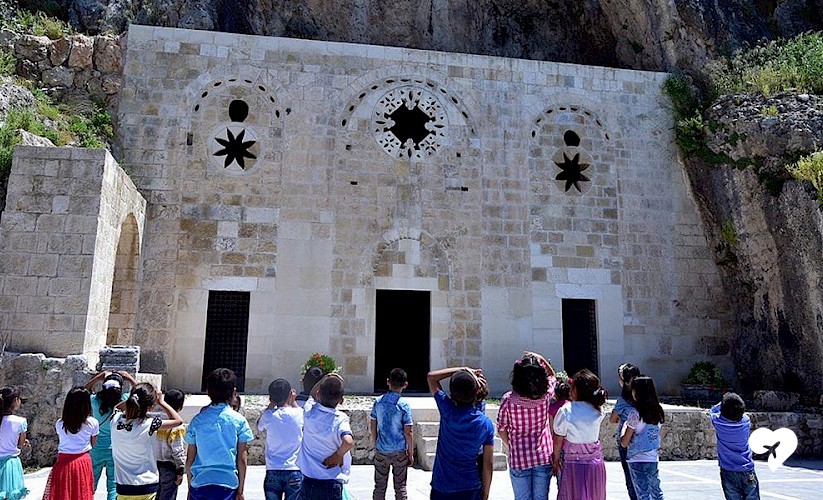Anatolia is a symbol of the brotherhood of religions where diverse religions and cultures have coexisted in peace over centuries. The Hatay Province hosts one of the prominent cities reflecting that feature of Anatolia. The provincial seat Antakya (ancient Antioch) is regarded a centre of faith and the city of brotherhood of religions because the shrines of Muslim, Christian and Jewish faiths stand side by side or in a close proximity. Every year many pilgrims from different faiths visit the city. The holiest structure for the city’s Christians, the Cave Church of Saint Peter, regarded as "the first church of the world", is also here.
The Term "Christianity" First Appeared in this Church
The church was established in a natural cave of 13 metres wide and 7 metres high, and it is believed to be used by Saint Peter, the Preeminent Apostle and the first pope to spread the message of Jesus Christ. Therefore it is regarded as the oldest church of the world. Another aspect of importance for Christianity is the fact that the name Christian was first given here to those who believe in Jesus Christ.
The 2000 Years Old Legacy
The Church of St. Peter was inscribed in the Tentative List of UNESCO World Heritage in 2011. The partially visible floor mosaics from the 5th century and the traces of frescoes on the wall adjoining the altar, indicate the previous glory of the Church. However, majority of the mosaics and frescoes were adversely affected over the centuries due to the physical conditions. As the Church was from an era when Christians had to worship in secrecy, an escape tunnel was built to provide an exit in case of a raid, which is still visible, right next to the altar.
The façade of the Church was originally built at the end of the 11th century, while Crusaders dominated the Antioch region. During the construction, the church was enlarged and connected to the façade with two arches. The present day façade was rebuilt by the Capuchin Friars in 1863 by the order of Pope Pius IX, which was financed by the French Emperor Napoleon III.
One of the Major Pilgrimage Sites of Christianity
The Ancient City of Antioch was the seat of Patriarch of Antioch in the early Christianity, and during the 7th century it was considered one of the five episcopal seats of Christianity alongside Rome, Alexandria, Jerusalem and Constantinople (present day İstanbul). The Church of Saint Peter was declared a site of pilgrimage in 1963 by the Pope Paul VI, and the Feast of Saint Peter is celebrated in the Church with religious services conducted by priests coming from different regions on June 29th every year.
HATAY: The City of Faiths and History
The history of Hatay goes back to the 5th millennia BC, and the city has been the site of successive civilisations. Its cultural heritage today is enriched by the traces of those diverse civilisations. Alongside the various important religious structures, there are many other interesting sites to visit in Hatay: the Charonion, dated to 175-164 BC, is a gigantic bust of Charon (the mythological ferryman who carried the souls of deceased to the other world), carved to the cliff face near the Cave Church of Saint Peter; built in Antiquity, the Citadel of Antioch has one of the longest ramparts in Turkey; the Titus- Vespasian Tunnel from the 1st century AD; and, Trajan's Aqueduct from the 2nd century AD. Also you may visit the Archaeological Museum of Hatay, which has one of the largest collections of ancient mosaics of the world.
How to Go?
Hatay province is situated in the southernmost tip of Turkish landmass along the eastern coast of Mediterranean Sea. The Cave Church of Saint Peter is at the foot of Mount Starius (Hac Dağı), two kilometres northeast of the city centre. There are scheduled flights to Hatay Airport from İstanbul and Ankara. All other major cities are connected by regular coach services.

.jpg)